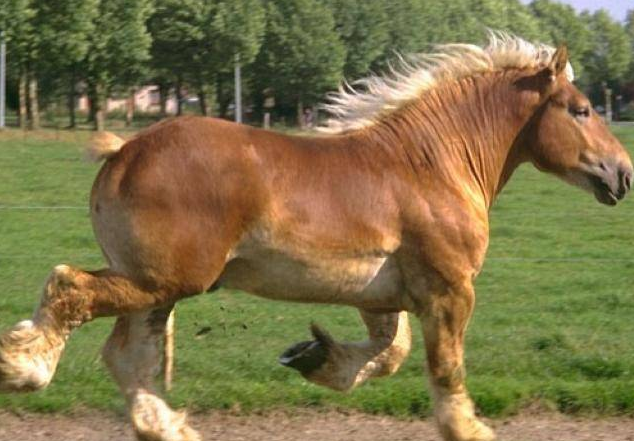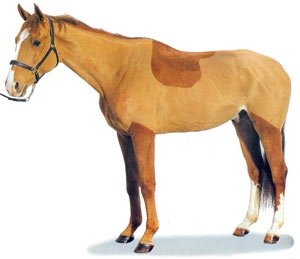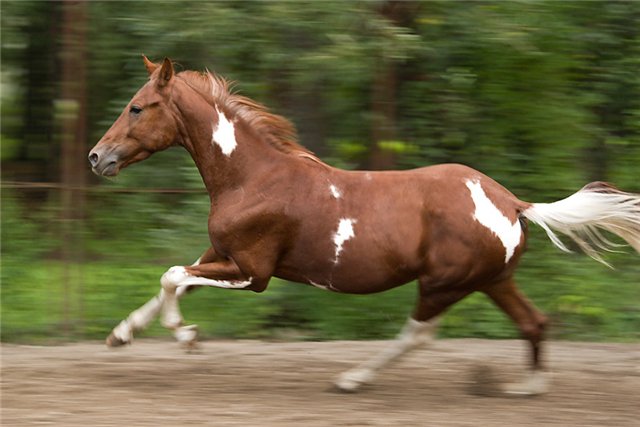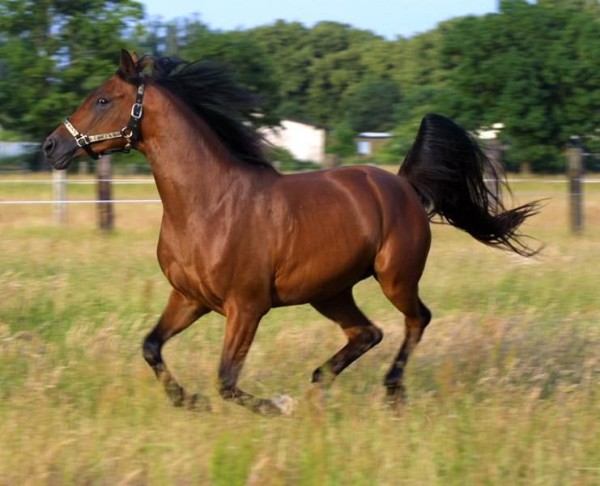French sel
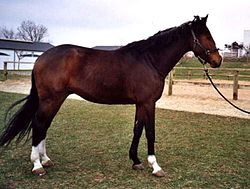 Creation and Development
Creation and Development
The history of the modern French seldom breed began in the 19th century in horse breeding areas of Normandy, where local and often rude Norman mares happened to have thoroughbred horse stallions imported from England, as well as English half-blood stallions and stallions of some of the most important Norfolk horse breeding lines. At that time, English half-blood stallions actually had obvious features and character of the Norfolk riding breed.
With their usual insight, the Norman horse breeders began to breed various types of horses that meet the requirements of the moment. They created two crosses. The first, Anglo-Norman, is divided into two main types – a draft cow and a riding horse; the second type was a frisky draft horse, which was bred specifically in order to satisfy the great demand for horses suitable for racing. Over time, the type of draft horse separated from the main breed and became a French trotter.
It was the frisky Anglo-Norman riding horse that experienced the influence of the Norfolk riding breed, which was almost as great as the influence of the thoroughbred riding breed, served as the prototype of the French mudflow.
Although the two world wars served as a serious reason for the decrease in the number of local Norman mares, the horse breeders managed to maintain some of the best breeding stock. They were able to use purebred riding horses at national stud farms to meet the new demand for quality riding horses that combine agility, stamina and a good jump. The best purebred horse stallions have influenced modern French mudflows, especially Orange Peel, Lord Frey and Ivanhoe. After World War II, the stallions Altimeyt and Furioso influenced this breed. Furioso was bought by Britain after the war for the amount that would now be considered ridiculous.
Currently, horses of this breed are used in show jumping, although the lighter French sel, which contains most of the purebred horse blood, is bred specifically for horse racing called AQPSA.
Characteristics
Most horses of the French French breed are bay, their growth is more than 1.63 m. Until the 1980s. this breed was divided into five classification groups. There are three types of medium horses: small (1.60 m), medium (up to 1.65 m) and large (more than 1.65 m), as well as two heavy types: small (up to 1.63 m) and large (more 1.63 m). In total, 33% of modern French mudflows were produced by thoroughbred stallions; 20% Anglo-Arabian stallions; 45% of the registered stallions of the French Sel breed and 2% of the French trotters. An outstanding example of French sel breed is the wonderful stallion Galoubet, a competitor in show jumping. He was the son of a stallion Alme breed French sel and trotter mare Viti.
